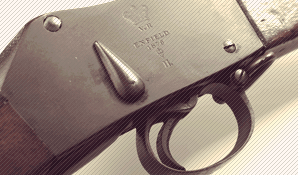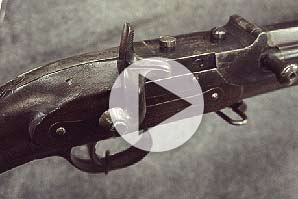An Iconic Image of Tommy Atkins
An Iconic Image of Tommy Atkins
If only you could have read the thoughts’ of Private 1416 Caleb Wood, B company 2nd battalion 24th Regiment of foot as he peered into the murky grey dawn of Zululand, the early ground mist hung above the ground, his nostils burning with the nauseating sulphorous stench of black powder, heavy wood smoke and the sickly smell of burned flesh and chemicals from the smouldering hospital which had burned heavily all night, It was Thursday 23rd January 1879.

To Wood, the pain of his burned fingers and aching shoulder was proof indeed that he was still alive. Looking around at the faces of his comrades, many blackened and blood covered, he instinctively dropped the lever under the breech of his rifle, cursing the boiling oil that was seeping from the super heated walnut. He no doubt slid another heavy boxer round into the chamber as he had done 200 times in the last ten hours, and steeled himself for the final, inevitable, last few minutes of his life. But the Zulu’s host who had attacked again and again were to come no more, in the distance a slow trickle had became a flood, as over 3500 warriors made their way back home, heads bowed in defeat and exhasution, they were leaving the hundreds of the kinsmen dead, piled high against a flimsy barricade of biscuit boxes and maize meal bags, shattered by the heavy .45 calibre slugs and dreadful bayonet thrusts ,Wood and his 103 comrades had dealt out all night against impossible odds.
Caleb Wood died in Ruddington Nottinghamshire in 1927, as a private soldier and defender of the Mission station at Rorkes Drift he would no doubt have poured scorn on the 1964 film Zulu, but in the 50 years since the film was made a new upsurge of interest has grown, not only in Great Britain, but worldwide into the “small wars” of the late 19th Century, and, inevitably into the weapons and tactics of a long forgotten age. In particular the rifle that was to play a major part in the British campaigns of the 1870’s and 80’s, The .450/.577” Martini Henry.
To know the life of Tommy Atkins, the "soldier of the Queen" that stood behind the biscuit boxes at Rorkes’ Drift, who stood shoulder to shoulder in desperate last stands at Isandlwana, Miawand and in the shimmering desert heat at Abu Klea; is to understand his Martini Henry rifle, with his ammuniton. Only then can you empathise with the man of his time, who, for a shilling a day fought out the aggressive foreign policy of his government.







